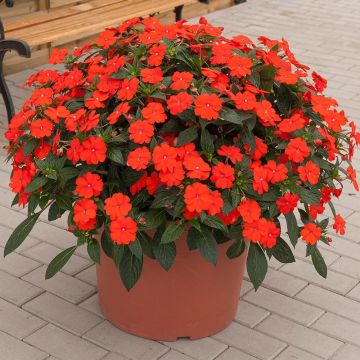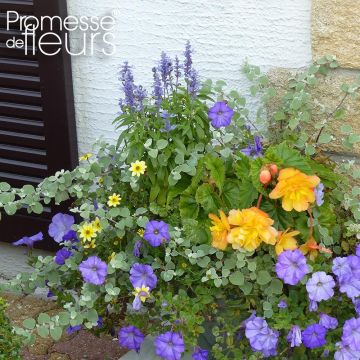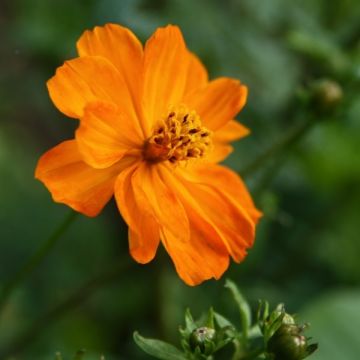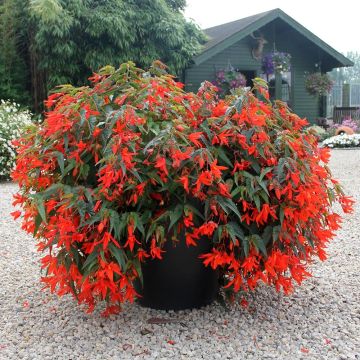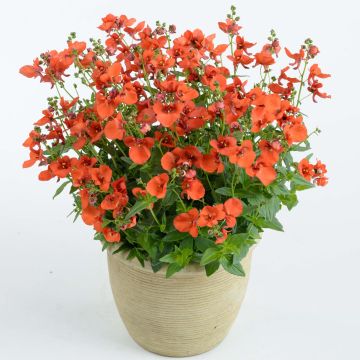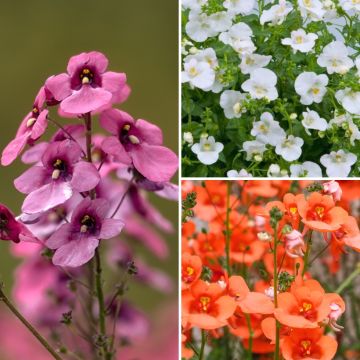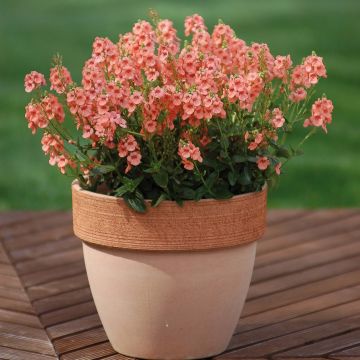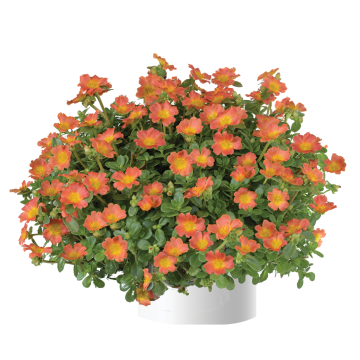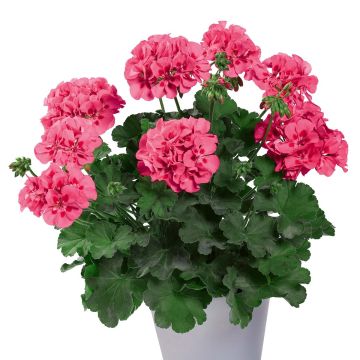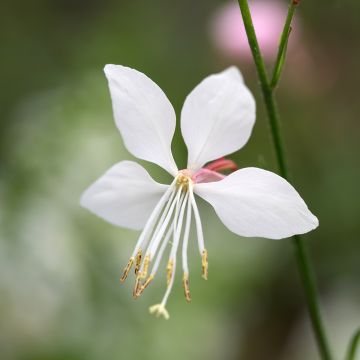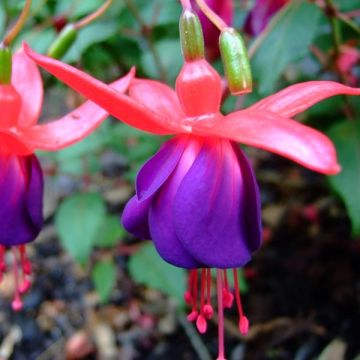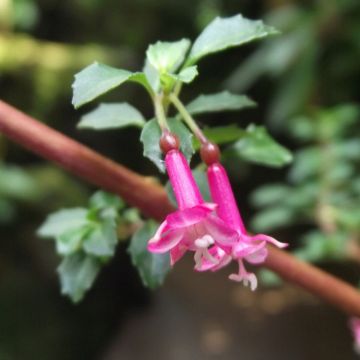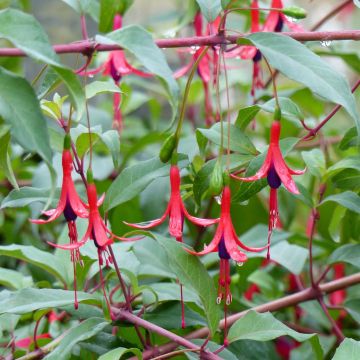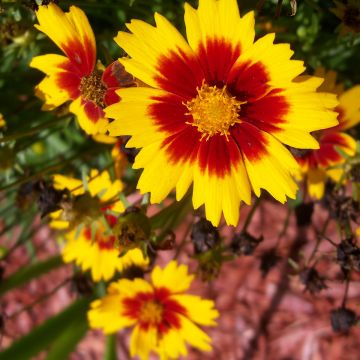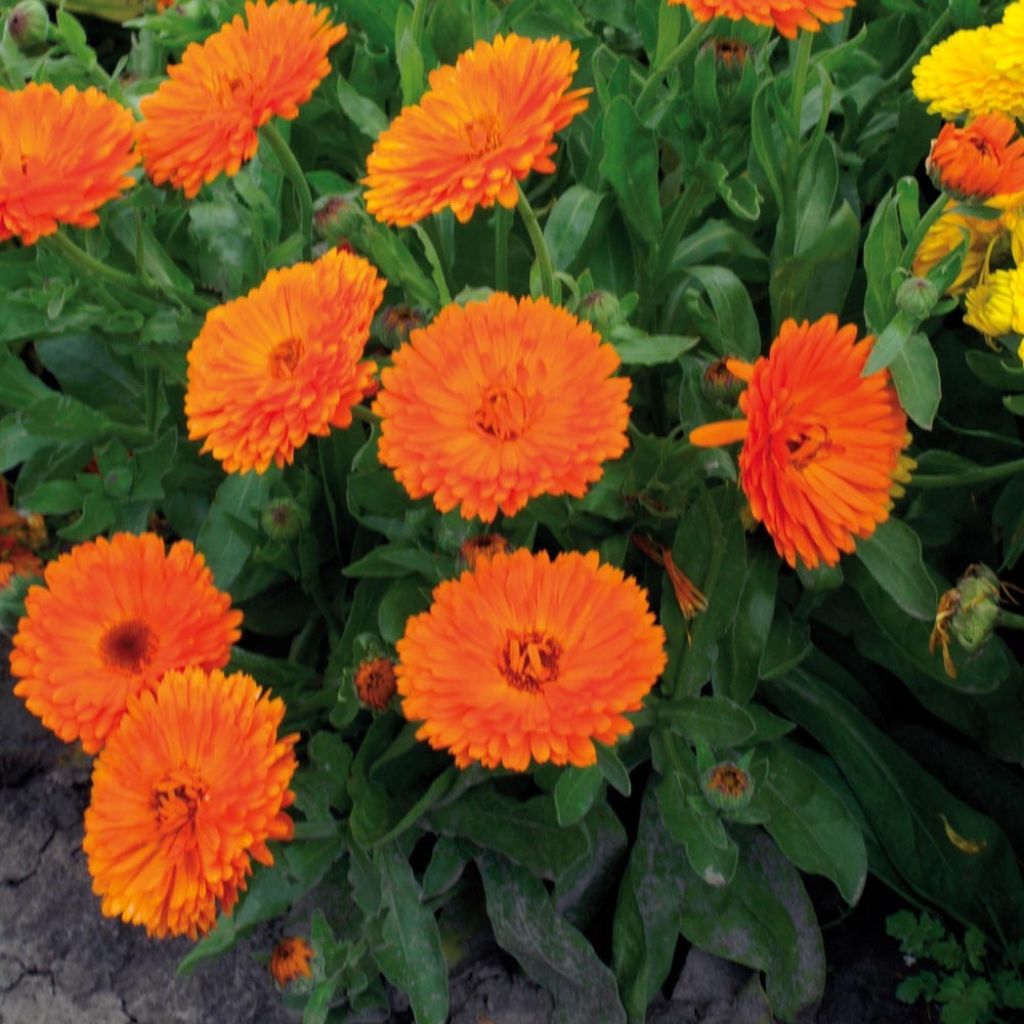

Souci des jardins Gitane Orange - Calendula officinalis
Calendula officinalis Orange Gitana - Marigold
Calendula officinalis Gitane Orange
Marigold
The plants have arrived in good condition.
Francoise, 20/10/2021
Why not try an alternative variety in stock?
View all →This plant carries a 6 months recovery warranty
More information
We guarantee the quality of our plants for a full growing cycle, and will replace at our expense any plant that fails to recover under normal climatic and planting conditions.
From €5.90 for pickup delivery and €6.90 for home delivery
Express home delivery from €8.90.
Does this plant fit my garden?
Set up your Plantfit profile →
Description
Calendula officinalis 'Orange Gitana' is a compact and floriferous marigold, ideal for ornamental pots, planters, and sunny borders. This variety bears large, fully double bright orange flowers. They last for a long time. Despite its shorter stems, this variety makes an excellent cut flower, as it has a fairly long vase life.
Calendula officinalis 'Orange Gitana' belongs to the Asteraceae family. It is a hardy annual herbaceous plant that does not exceed 30cm (12in) in all directions. The flowering begins in June and lasts until the first frosts. Its bright orange flower heads are in the form of flattened pompoms, measuring 8 to 10cm (3 to 4in) in diameter. The flowers open and close, following the course of the sun. Its upright stems carry oblong, fuzzy leaves in an olive-green colour, which are highly aromatic when crushed.
Its foliage emits a strong odour that repels parasites such as aphids, cabbage worms, asparagus worms, tomato worms, Colorado potato beetles, and whiteflies. Moreover, it is a pollinator-friendly plant. It is especially attractive to hoverflies, which are major aphid predators. It is therefore a valuable asset in the vegetable garden, within the framework of organic cultivation. This plant is perfect for gardeners who practice organic gardening.
Calendula officinalis 'Orange Gitana' quickly fills a border or decorates a sunny patio. It looks wonderful in flower beds and pots, whether it be individually or in groups. It pairs beautifully with dahlias and complements airy grasses. It can be planted in small clusters amidst the grey foliage of artemisias and stachys, with California poppies, red or blue shrubby salvias, love-in-a-mist, or surrounded by greenery, combined with tansies, Kochia childsii, or white, yellow, or red ground cover roses that will harmonise with its rich orange hues. Calendulas are also edible, eaten in moderation. The flowers can be used in salads, soups, or desserts. Some consider its flavour similar to pepper.
Listed in gardens since the 12th century, Calendula officinalis has virtues that are used in many fields. It is primarily a dye plant, used as a pigment. It is also used in cosmetics, pharmacology, and homeopathy for its soothing, astringent, healing, anti-inflammatory, and hepatic properties, among others. Its nickname of false saffron comes from its culinary use. Marigolds can replace saffron by colouring rice-based dishes, stews, soups, and herbal teas. Use it raw to flavour cheeses, salads, and butter. Furthermore, it has long been established in the vegetable garden as an ally of other edible plants, as it repels nematodes and attracts numerous pollinating insects.
Please be aware that our young plug plants are professional products reserved for experienced gardeners. Upon receipt, transplant and store them in a sheltered place (veranda, greenhouse, cold frame) at a temperature above 14°C (57.2°F) for a few weeks before being planted outdoors once the risk of frost has passed.
Report an error about the product description
Flowering
Foliage
Plant habit
Botanical data
Calendula
officinalis
Gitane Orange
Asteraceae
Marigold
Cultivar or hybrid
Other Annuals A to Z
Planting and care
They are fast-growing plants that thrive in the sun or, at a stretch, partial shade in a warm climate, and in a sheltered position. This variety should be planted in well-prepared, well-drained, fairly fertile, and light soil. Once established, garden marigolds require very little watering in open ground. Water more regularly if planted in pots. Protect plants from slugs and snails, which are fond of them.
Planting period
Intended location
Care
-
, onOrder confirmed
Reply from on Promesse de fleurs
Plug plants - Annuals
Haven't found what you were looking for?
Hardiness is the lowest winter temperature a plant can endure without suffering serious damage or even dying. However, hardiness is affected by location (a sheltered area, such as a patio), protection (winter cover) and soil type (hardiness is improved by well-drained soil).

Photo Sharing Terms & Conditions
In order to encourage gardeners to interact and share their experiences, Promesse de fleurs offers various media enabling content to be uploaded onto its Site - in particular via the ‘Photo sharing’ module.
The User agrees to refrain from:
- Posting any content that is illegal, prejudicial, insulting, racist, inciteful to hatred, revisionist, contrary to public decency, that infringes on privacy or on the privacy rights of third parties, in particular the publicity rights of persons and goods, intellectual property rights, or the right to privacy.
- Submitting content on behalf of a third party;
- Impersonate the identity of a third party and/or publish any personal information about a third party;
In general, the User undertakes to refrain from any unethical behaviour.
All Content (in particular text, comments, files, images, photos, videos, creative works, etc.), which may be subject to property or intellectual property rights, image or other private rights, shall remain the property of the User, subject to the limited rights granted by the terms of the licence granted by Promesse de fleurs as stated below. Users are at liberty to publish or not to publish such Content on the Site, notably via the ‘Photo Sharing’ facility, and accept that this Content shall be made public and freely accessible, notably on the Internet.
Users further acknowledge, undertake to have ,and guarantee that they hold all necessary rights and permissions to publish such material on the Site, in particular with regard to the legislation in force pertaining to any privacy, property, intellectual property, image, or contractual rights, or rights of any other nature. By publishing such Content on the Site, Users acknowledge accepting full liability as publishers of the Content within the meaning of the law, and grant Promesse de fleurs, free of charge, an inclusive, worldwide licence for the said Content for the entire duration of its publication, including all reproduction, representation, up/downloading, displaying, performing, transmission, and storage rights.
Users also grant permission for their name to be linked to the Content and accept that this link may not always be made available.
By engaging in posting material, Users consent to their Content becoming automatically accessible on the Internet, in particular on other sites and/or blogs and/or web pages of the Promesse de fleurs site, including in particular social pages and the Promesse de fleurs catalogue.
Users may secure the removal of entrusted content free of charge by issuing a simple request via our contact form.
The flowering period indicated on our website applies to countries and regions located in USDA zone 8 (France, the United Kingdom, Ireland, the Netherlands, etc.)
It will vary according to where you live:
- In zones 9 to 10 (Italy, Spain, Greece, etc.), flowering will occur about 2 to 4 weeks earlier.
- In zones 6 to 7 (Germany, Poland, Slovenia, and lower mountainous regions), flowering will be delayed by 2 to 3 weeks.
- In zone 5 (Central Europe, Scandinavia), blooming will be delayed by 3 to 5 weeks.
In temperate climates, pruning of spring-flowering shrubs (forsythia, spireas, etc.) should be done just after flowering.
Pruning of summer-flowering shrubs (Indian Lilac, Perovskia, etc.) can be done in winter or spring.
In cold regions as well as with frost-sensitive plants, avoid pruning too early when severe frosts may still occur.
The planting period indicated on our website applies to countries and regions located in USDA zone 8 (France, United Kingdom, Ireland, Netherlands).
It will vary according to where you live:
- In Mediterranean zones (Marseille, Madrid, Milan, etc.), autumn and winter are the best planting periods.
- In continental zones (Strasbourg, Munich, Vienna, etc.), delay planting by 2 to 3 weeks in spring and bring it forward by 2 to 4 weeks in autumn.
- In mountainous regions (the Alps, Pyrenees, Carpathians, etc.), it is best to plant in late spring (May-June) or late summer (August-September).
The harvesting period indicated on our website applies to countries and regions in USDA zone 8 (France, England, Ireland, the Netherlands).
In colder areas (Scandinavia, Poland, Austria...) fruit and vegetable harvests are likely to be delayed by 3-4 weeks.
In warmer areas (Italy, Spain, Greece, etc.), harvesting will probably take place earlier, depending on weather conditions.
The sowing periods indicated on our website apply to countries and regions within USDA Zone 8 (France, UK, Ireland, Netherlands).
In colder areas (Scandinavia, Poland, Austria...), delay any outdoor sowing by 3-4 weeks, or sow under glass.
In warmer climes (Italy, Spain, Greece, etc.), bring outdoor sowing forward by a few weeks.

































